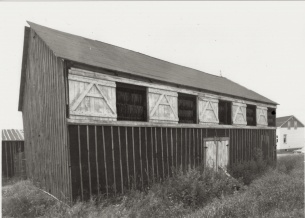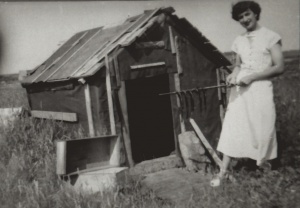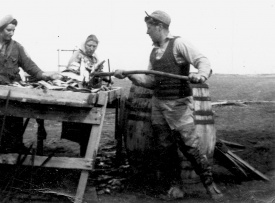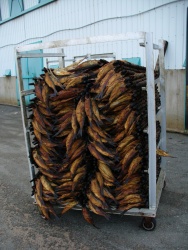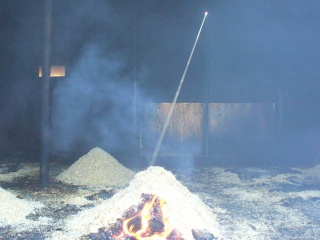Cap-Pelé Smokehouses, an Acadian Cultural Heritage
par Forgues, Éric
Some customs are, in and of themselves, authentic heritage that has been passed down to us from generation to generation. For those families who have been entrusted with such legacies, the knowledge is not only treasured, but it is also key to their economic subsistence. For many families in South-eastern New Brunswick that is exactly what the custom of smoking fish represents. In fact the traditional skill had so much income generating potential, that, during the 20th century, they transformed the household custom into a commercial activity. It is this vibrant heritage custom that is presented in the following paragraphs.
In New Brunswick, visitors walking along the shores of the Atlantic will likely catch a whiff of the aroma of smoked fish that lingers in the air at certain times of the year. The odor comes from the colourful buildings where herring is smoked in the region of Cap-Pelé, Bas-Cap-Pelé, Dupuis Corner, Trois Ruisseaux and the Petit-Cap villages. This household tradition started two centuries ago in the region, but evolved into a commercial activity in the 1920s.
Article disponible en français : Boucanières de Cap-Pelé, une pratique patrimoniale acadienne
Cap-Pelé (including Bas-Cap-Pelé and Dupuis Corner)
Located in South-eastern New Brunswick, along the Northumberland Strait that separates New Brunswick from Prince Edward Island, is Cap-Pelé (NOTE 1). It is a coastal village where people make a living from the fishing industry, fish processing plants and tourism. Cap-Pelé is home to 2279 inhabitants, which includes 750 families, of which 88% are native French-speakers (2006 Census). 67% of the population is in the work force while the unemployment rate rests at 19,5%.
The waters off the coast of the Cap-Pelé area have always been one of the main spawning shoals for herring during spring. During the 17th century, French explorers used to call the area Cap Hareng [Cape Herring] (Brun and LeBlanc, 2005). And so, spring was herring season and most families had their own little herring smoke houses in their backyards. The technique includes both salting and smoking the fish. Its origins date back to the time of the first French settlers, who had brought the technique with them from the home country. Although, it seems that the custom was also influenced by the knowledge acquired from the Aboriginals who also used to smoke fish. It is most likely than that the technique shared by Acadian families results from a mix of French and Aboriginal knowledge.
Proof of the existence of boucanières [smokehouses] in the Cap-Pelé area date back to the 1840s (NOTE 2). There are also records of commercial smokehouses dating from the 1910s. Although with time, the Acadian of the region acquired their own techniques, it was English-speaking settlers from Chimougoui (Shemogue) and from Grand Manan around the Bay of Fundy in Southwest New Brunswick, who taught them the technology for commercially producing smoked herring. There are also records of an English speaking family in Shediac, near Cap-Pelé, who smoked fish for commercial purposes in the 1840s and 1850s.
Before it became a commercial activity, smoking herring used to be a household activity used to preserve the family's food supply. Later, it became a commercial activity, along with other sources of income such as fishing and growing tobacco. Drying and smoking fish began with the fishing industry. Fishermen used to smoke the herring they caught in the area. Later on, some of them specialised in smoking herring and were able to live solely on this income. In the 1960s, not enough herring was being caught locally to supply the many smokehouses, forcing the "boucaneux" [smokers], as those who smoke herrings are called, to buy their fish from other regions. Today, owners of smokehouses rarely fish the herring they intend to smoke.
This industry has grown rapidly, going from two smokehouses in operation the 1910s, to about twenty in the 1950s. The majority of the smokehouses are centred around the village of Bas-Cap-Pelé, although some have also been established in the villages of Trois-Ruisseaux and Dupuis Corner. In 1986, there was a total of 25 smokehouses in the region, with their numbers stable ever since.
Buying herring from outside sources offers the possibility of smoking fish not only inspring, but also in fall-and even all year long. Modern methods of preservation also make it possible to preserve fish longer, so as to be able to smoke it later, when it can be sold for a better price.
A Traditional Skill, Legacy of Previous Generations
For the most part, the smokehouses are family businesses. Even today, most smokers have learned their trade from their parents, who themselves had run their own smokehouses. The trade includes both smoking and managing skills. The trade knowledge has been handed down from generation to generation as a family tradition and has not changed much over time except in a few cases where smokehouses are using automatic equipment.
To preserve fish by smoking, the fish must first be salted and soaked in brine for a period of 5 to 7 days. It is important to use the right amount of salt, so as to keep the fish from cooking. Then, employees (women and children in the old days) string herring on long poles (which they call "cannes") that the men hang in the smokehouse for 5 to 6 weeks. After that, the fire must be lit and kept burning to produce smoke, while avoiding too much heat production-which would cook the fish. For the smokefires, they use hard wood and saw dust. The one who keeps the fires burning has acquired a specific technique, which is essential to ensure the quality of the product. The fire tender is seen to be a special individual who "holds the secret of the fire." The risk of fire is a constant reality in the smokehouses, which are located on the coast where the winds constantly blow in from the sea. The people of the region remember a great number of smokehouse fires. Traditionally, smoked herring is packed into wooden cases stamped with the producer's logo. Once packaged, the smoked herring is exported from Halifax harbour, mostly to Haiti and the Dominican Republic where the fish is consumed in great quantities.
A Few Industry Statistics
The region produces 95% of the world's production of smoked herring. According to a study published in 2000 by a consulting firm (Leblanc, 2000), 31 producers managed 25 smokehouses. In the Cap-Pelé region, the industry created 900 part time jobs, which represents about 438 full time jobs. In an area where the workforce consists of about 1300 individuals, importance of this industry is obvious. The village also harbours a fishing fleet of around sixty boats, many of which provide fish for the smokehouses. There are also three other fish processing plants in the village for preserving other types of seafood.
A study by Fisheries and Oceans Canada (1987) revealed that in 1986, the 25 smokehouses produced 1 million cases of smoked seafood (9,000 tons). In the second half of the 1990s, the annual production was believed to have risen to 2 million cases(NOTE 3), which translates to total value of 40 million dollars, while in 1986, the total value of sales was about 15 million (Leblanc, 2000). Thus production has doubled in a few years.
The various smokehouses vary greatly in importance, when compared with each other. For example, the largest producer supplies equal to a third of the total production of the 19 other major smokehouses and its output is equal to the production of the 11 less productive smokehouses. All in all, three smokehouses control almost the entire production.
From Competition to Cooperation
The local market for smoked fish products remained stable until the 1970s. At that time, a group of buyers arrived in the region and competition between businesses became fierce (Co-fish consultants, 1985). Some buyers decided to do business directly with certain smokehouses instead of buying from the middleman, and with that, competition between producers increased even more. In 1985, five smokehouses sold their products directly to the consumer, seven sold their smoked fish through a cooperative federation and the rest sold their production to Canadian buyers or exporters. Some studies revealed that the more smokehouses there are in operation, the tighter the competition will be. This will result in a sudden drop in prices, which will in turn weaken the whole sector (Co-fishconsultants, 1985). And so, it was recommended that producers organise their activities better, in order to lessen competition that could be harmful to the industry. A smokehouse association was briefly established in the 1980s, but was never able to reduce competition.
The Future of an Acadian Ancestral Custom
A new project for the creation of an association was attempted again in 2003, when one of the smokehouse owners decided to seek the help from a third party from outside the region that was not involved in the industry. This initiative allowed for the creation of a marketing organisation which succeeded in uniting 18 of the region's smokehouses in a single year. Only seven chose to remain independent.
The agreement between the smokehouses first dealt with selling prices, production quotas and it would impose heavy fines on those who failed to respect the agreement. The selling price is the same for all the smokehouses that accept to have the marketing organisation sell all the fish they produce. Today, the agreement is also regulates the purchasing of the materials used in the herring smoking process (salt, fish, and equipment).
For the majority of smokehouses, the organisation and the resulting agreement allowed for the competition and the tension between many families of the area to diminish. It made it possible for its members to plan their production better, as well as to be able to offer a better quality product. The once fierce competition had forced smokehouses increase the production pace in an attempt to be the first operation to bring their products to the market, thereby obtaining a better selling price. But, in the long run, this was done at the expense of quality.
Today, the smokehouse organisation has also helped to promote the trade, as well as the traditional knowledge and techniques required to make quality smoked herring. For a long time the smokers (boucaneux) were looked down upon in the region, because of the strong smells created by the smokehouses and because the trade was considered to be a dirty job. Although some people in the region are still not happy to have to put up with the smells of the smokehouses, the industry has become one of the pillars of the local economy and helps to preserve an ancestral cultural heritage (NOTE 4).
Éric Forgues
Assistant director and researcher
ICRML, Université de Moncton
NOTES
Note 1. Data from Trois-Ruisseaux and Petit Cap, along with other villages in the region, was not available.
Note 2. The term "boucanière" is used in the south-eastern part of New Brunswick to designate the facilities (plants) where herring is smoked and dried. Nevertheless, smokehouses also used to smoke and salt different kinds of fish (alewife, cod, mackerel).
Note 3. A case weighs approximately eight kilos.
Note 4. This article is based on a research by Éric Forgues, Omer Chouinard and Danièle Courchesne (Forgues, Chouinard and Courchesne, 2009). The author wishes to thank Nicole Briand and Régis Brun for their invaluable help.
BIBLIOGRAPHY
Briand, Nicole, Au pays des boucanières, document audio-visuel produit par Cojak Productions Inc., Tracadie-Sheila (New-Brunswick), 2008.
Brun, Régis et Ronnie-Gilles Leblanc, Histoire de Cap-Pelé, 1804-2004 : le passé d'une communauté dynamique en Acadie, Cap-Pelé (New-Brunswick), 2005.
Co-fish Consultants Ltd., The Smoked Herring Industry, a detailed study for Cap-Pelé Bloater Smokers' Association, Moncton (Nouveau-Brunswick), 1985.
Forgues, Éric, Omer Chouinard et Danièle Courchesne, « Quand les entreprises produisent du capital social, Étude d'un cas de coopération interentreprises », Économie rurale, no 311, May-June 2009, p.18-33.
LeBlanc, Bertin, New Technology in the Smoked Herring Industry, South-East New Brunswick, Dieppe (New-Brunswick), April 2000.
Pêches et Océans Canada, L'impact économique de l'industrie du hareng fumé du sud-est du Nouveau-Brunswick sur la région étudiée, Division de l'analyse économique, Région du Golfe, Moncton (New-Brunswick), 1987.
Additional DocumentsSome documents require an additional plugin to be consulted
Images
-
 Boucanière à Willie L
Boucanière à Willie L
andry, 1945 -
 Boucanière de Thaddée
Boucanière de Thaddée
à Sam LeBlanc,... -
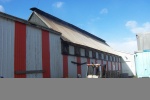 Boucanière de Willie
Boucanière de Willie
Niles datant de... -
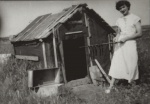 Boucanière domestique
Boucanière domestique
-
 Boucanières des annee
Boucanières des annee
s 1930, apparte... -
 Débarquement du haren
Débarquement du haren
g à Shediac -
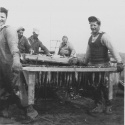 Enfilage des harengs
Enfilage des harengs
-
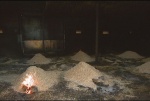 Feux répandant la fum
Feux répandant la fum
ée nécessaire a...
-
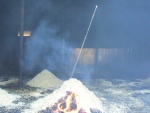 Fumée dégagée par les
Fumée dégagée par les
feux à l'intér... -
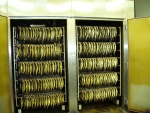 Fumoir automatique de
Fumoir automatique de
Botsford Fishe... -
 Goélette de pêche, No
Goélette de pêche, No
uvelle-Écosse, ... -
 Hareng fumé acadien v
Hareng fumé acadien v
endu dans un ma...
-
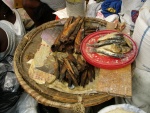 Hareng fumé acadien v
Hareng fumé acadien v
endu dans un ma... -
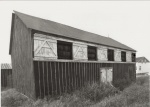 Harengs suspendus, vu
Harengs suspendus, vu
s par la fenêtr... -
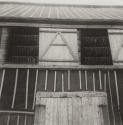 Harengs suspendus, vu
Harengs suspendus, vu
s par la fenêtr... -
 Intérieur d'une bouca
Intérieur d'une bouca
nière. Deux ind...
Documents PDF
Hyperliens
- Village of Cap-Pelé, New Brunswick
- [IN FRENCH] «Au pays des boucanières : Les boucaneux et leur métier : de Cap-Pelé à Haïti», by Emmanuelle Chapados, L'Étoile, June 14th, 2008

